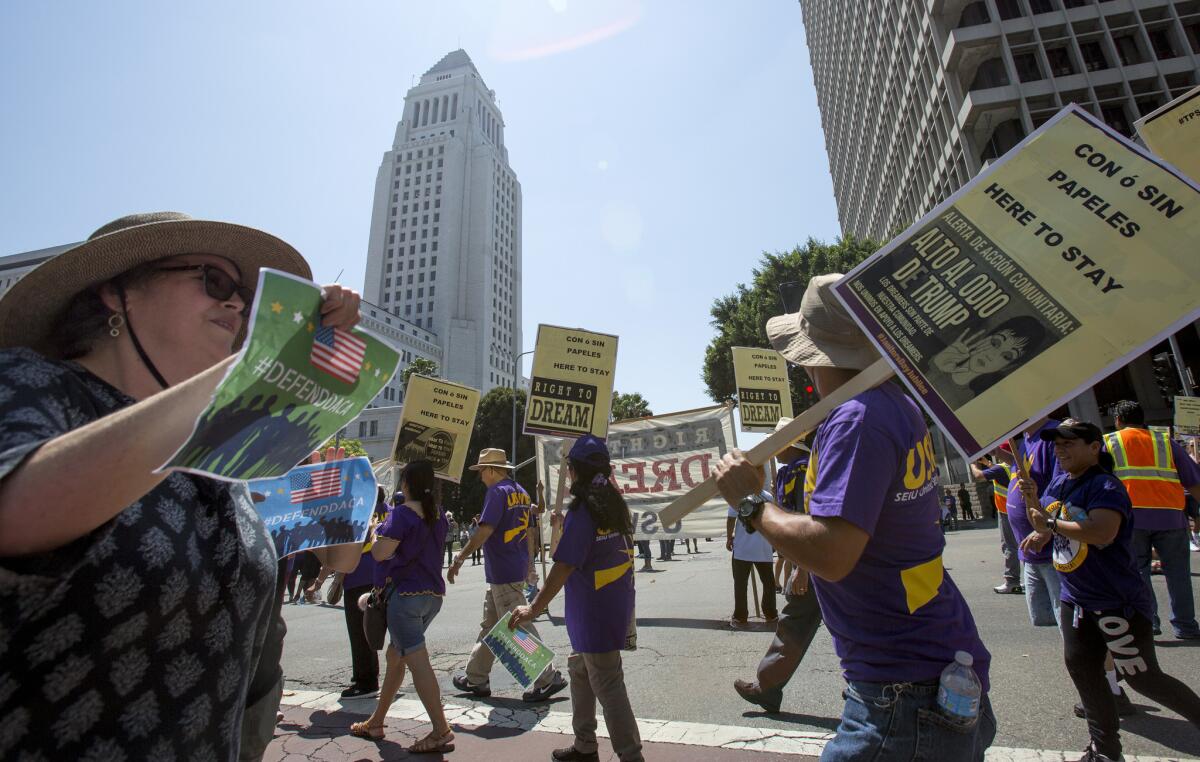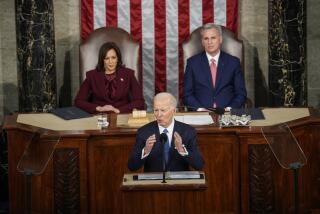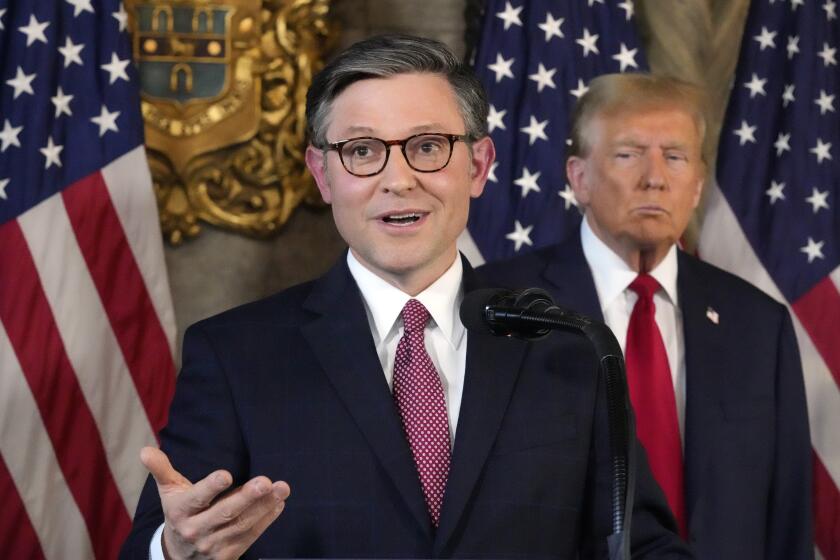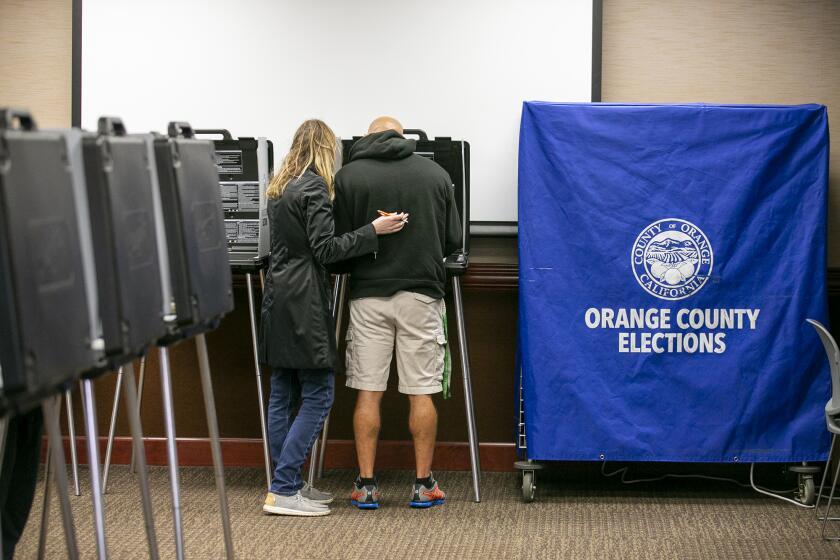Q&A: A quick political guide to what’s next for the ‘Dreamers’

Congress and the White House haven’t been able to agree on a plan to give legal status to millions of people brought to the country illegally as children, and the clock is ticking.
When President Trump ended the Deferred Action for Childhood Arrivals program in September, he gave Congress until March 5 to find a solution for the so-called Dreamers before the program completely shutters. Despite months of discussion over what to do, there are just five days left on the legislative calendar before the deadline.
Here is what we know about what’s to come.
First of all, what happens March 5?
Not much. Federal judges in New York and California ordered the Justice Department to resume accepting DACA renewal applications while challenges to the program’s end are appealed. Under DACA, more than 700,000 people had temporary deportation relief and permission to legally work in the country.
The judges’ orders took a bit of the pressure off Congress to get something done by Trump’s deadline.
The U.S. Supreme Court is considering whether to accept a Justice Department request to expedite an appeal rather than let it go through the normal appeals process, but the court hasn’t granted such a request in more than 30 years.
If the Supreme Court does take it up, justices could resolve the status of DACA by the end of the current court session in June. Should the appeal stay where it is, the issue probably won’t be back at the Supreme Court until fall at the earliest.
So where do things stand in Congress?
Last week, the Senate brought up and failed to advance four proposals that would have given the Dreamers some kind of legal status in exchange for border security funding or changes to the overall immigration system.
The proposal thought to have had the best chance would have provided $25 billion for border security, including Trump’s border wall, in return for legalizing the status of some 1.8 million Dreamers and giving them a 10-year path to citizenship.
That proposal came within six votes of the 60 needed to move forward, failing in part because the president said on Twitter he would veto it. There is little doubt it could have passed with his support.
Senate Republican leaders said they would move to other topics if a deal wasn’t reached, and it is unclear whether that was a threat.
“If we don’t act, these young immigrants will face the threat of deportation. My message to Dreamers is to not give up hope. We’re going to keep working,” California Sen. Dianne Feinstein said after the Senate bills failed.
Will the House try to pass its own bill?
The House waited for the Senate to make the first move, but Speaker Paul D. Ryan suggested the Republicans who control the chamber would move on their own.
“We clearly need to address this issue in March; I’ll just leave it at that,” the Wisconsin Republican told reporters last week.
More than a half a dozen House proposals are being floated. Ryan and other GOP leaders have coalesced around a plan from House Judiciary Chairman Robert W. Goodlatte (R-Va.) and Homeland Security Chairman Michael McCaul (R-Texas) and are working to determine how many members would vote for it.
“His instructions to me are to get this bill done,” Goodlatte, a former immigration attorney, said of Ryan on CSPAN.
What’s in the Goodlatte plan?
The proposal would allow Dreamers to periodically renew legal status and eventually apply for a green card, but has no path to citizenship. It would also require employers to check employees’ immigration status through the E-Verify program and authorizes the Justice Department to withhold grants from so-called sanctuary cities.
Bipartisan Senate effort to protect Dreamers collapsed after Trump threatens veto »
Conservatives are keeping a close eye on what Ryan is willing to bring to the floor, and if he will adhere to a promise he made when he became speaker that he would not bring an immigration bill up for a vote unless it has the support of a majority of House Republicans.
The Goodlatte plan has Trump’s backing and is among the most conservative options floated. It is universally opposed by House Democrats and it isn’t likely to get considered in the Senate even if it passes.
What do Democrats want?
Republican House leaders have ignored a request from Democrats for the House to mimic the Senate and consider several different proposals at once. (You might remember House Minority Leader Nancy Pelosi spending eight hours pushing for Ryan to promise to consider multiple plans.)
House Democrats and moderate Republicans prefer a bipartisan bill sponsored by Reps. Will Hurd (R-Texas) and Pete Aguilar (D-Redlands).
The Hurd-Aguilar plan is similar to the measure that got the most support in the Senate. It would allow Dreamers to apply for permanent legal status and includes increased immigration enforcement, including more control of the southern border and more funding to address backlogs in immigration courts.
Its 53 sponsors include 10 members of the California delegation: three Republicans and seven Democrats.
What are Californians doing?
An estimated 222,000 DACA recipients live in the state.
Aguilar is not the only Californian working behind the scenes to craft legislation. Central Valley Republican Reps. David Valadao and Jeff Denham are part of a bipartisan group seeking to come up with a plan both parties will accept. Their districts are heavily Latino.
Denham called on Ryan to promise to allow a vote on “all serious and substantive proposals, particularly those offered on a bipartisan basis.”
Is a short-term fix possible?
It’s unclear.
Republican Sen. Jeff Flake of Arizona has proposed a stopgap measure that would legislatively renew the Deferred Action for Childhood Arrivals program for three years in exchange for a $7.6-billion increase in border security spending.
But Trump and hard-line conservatives have been pushing for a comprehensive immigration policy overhaul, and many are leery about a band-aid fix becoming permanent.
The president’s rhetoric about a legislative fix, especially over the last few weeks, signals he is not open to a temporary solution.
So what is next?
Congress tends to accelerate its work when facing a deadline, and delicate topics often get thrown into must-pass bills in an attempt to force a vote. That’s one reason the government has shut down twice this year.
The next must-pass spending bill has to be approved by March 24 in order to avoid a government shutdown, so that’s what’s being viewed as the new deadline to get something done for Dreamers. It’s also one of the last major pieces of legislation Congress expects to pass this year before lawmakers’ attention shifts to the midterm election.
To read this article in Spanish, click here
Follow @sarahdwire on Twitter
Read more about the 55 members of California’s delegation at latimes.com/politics
ALSO:
Bipartisan Senate effort to protect Dreamers collapses after Trump threatens veto
California could flip the House in 2018, and these 14 races will make the difference
Updates on California politics
More to Read
Get the L.A. Times Politics newsletter
Deeply reported insights into legislation, politics and policy from Sacramento, Washington and beyond. In your inbox three times per week.
You may occasionally receive promotional content from the Los Angeles Times.







